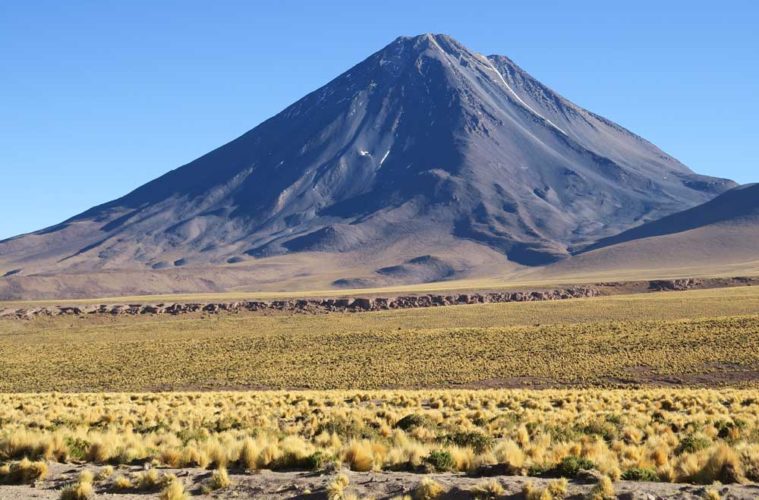Discover the weird and wonderful in underrated Bolivia. Marianne Alexander describes what it was like braving Bolivia.
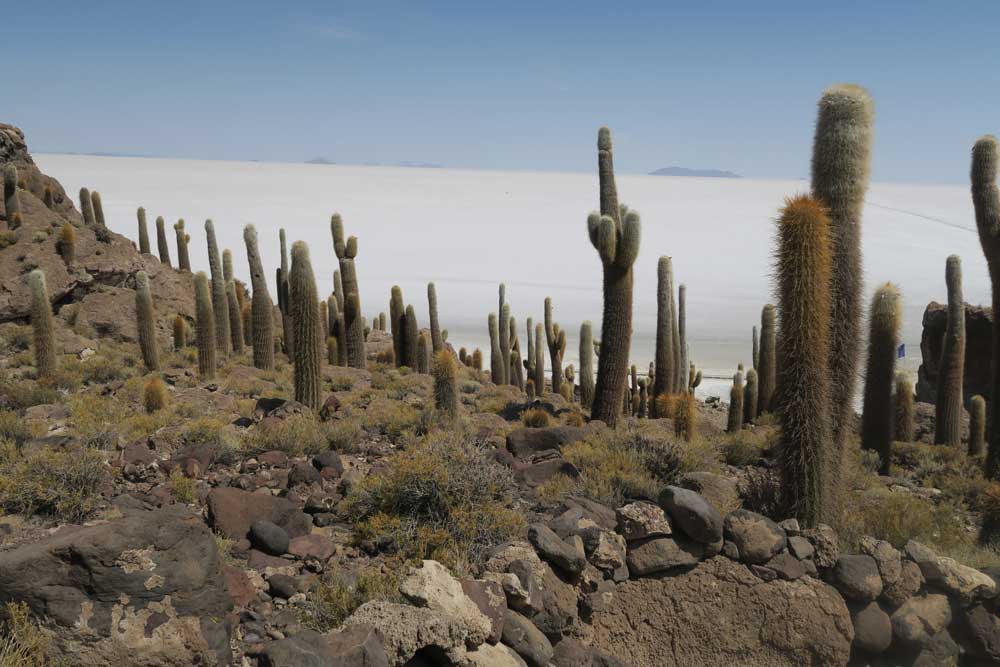
The remote town of San Pedro de Atacama in the Atacama Desert is the driest place on earth. It’s a real tourist hub where backpacker hostels, restaurants and businesses advertising 4×4 desert tours housed in adobe buildings line the dusty main street. There we spent two days climbing up above the ruins of the ancient Fort of Quitor and exploring the weird and wonderful Valley of the Moon with its salt caves, vast, dark sand dunes and eroded rock faces, while our bodies acclimatised to the 2 500m altitude.
READ MORE: Destination: Phuket
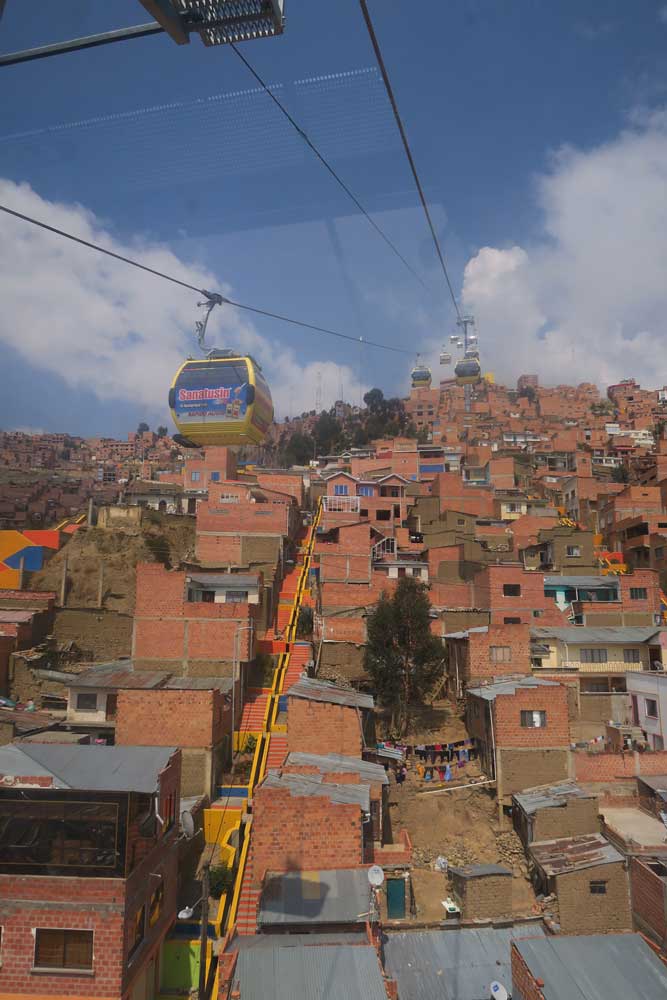
We found ourselves at 4 500m above sea level on the scree slopes at the base of the snow-capped Juriques volcano in the Bolivian Altiplano. Some were already feeling the effects of the high altitude, particularly when walking uphill, and accepted our guide’s offer of coca leaves, which the Andeans chew to alleviate altitude sickness. Once our bags and food and water for the next couple of days had been packed into two sturdy 4x4s, we set off into Eduardo Abaroa Andean Fauna National Reserve in the southwestern region. This is a harsh, barren area with little vegetation, and so vast, that at times we looked like ants.
There’s no contact with the outside world here, no shops and no roads to speak of, just a multitude of tracks as each driver chooses his own route to avoid the dust of the vehicle ahead.
READ MORE: Destination: Mediterranean magic in Malta
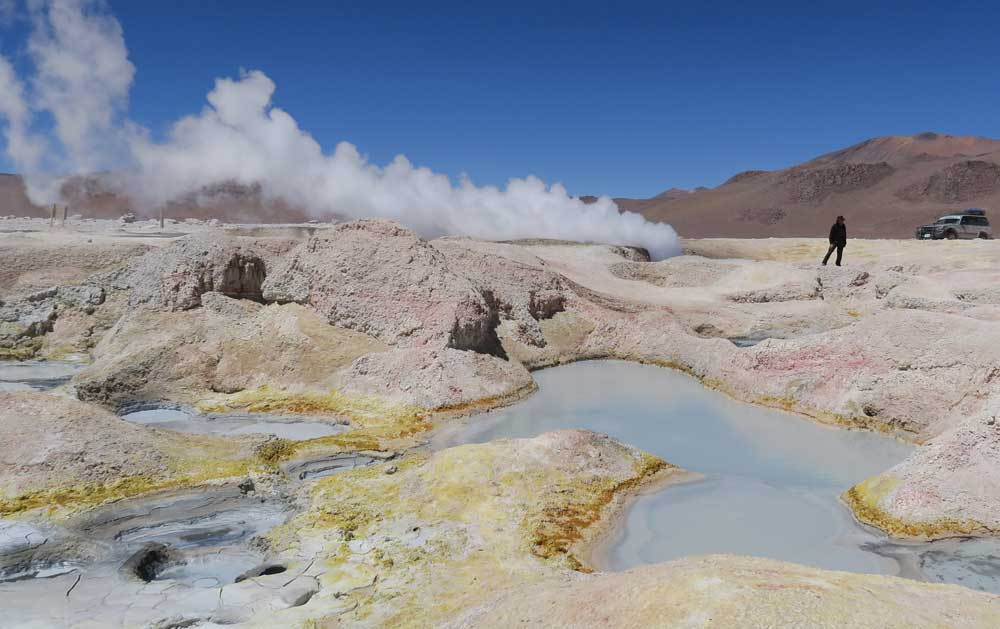
The Altiplano lies in an active Andean volcanic belt and our route took us to some remarkable geological features. We passed smoking volcanoes, walked on a lava flow, stopped for a swim in the Termas de Polques hot springs, and wandered between several steaming hot and malodorous fumaroles and mud pots at the Sol de Mañana geothermal field. Our guide also stopped so we could photograph the surrealistic landscape known as the Desierto del Dali (Salvador Dalí Desert) and explore outcrops of wind-sculpted rock formations, which included the infamous, solitary tree-like Árbol de Piedra.
Walking through a canyon, we were fascinated by the rocks, which were like precisely stacked giant building blocks. Growing between huge boulders and teetering on scree slopes, were bright green mounds of yareta (Azorella compacta) one of the oldest plants in the world. A relative of parsley, it looks like moss and is one of the few plants that survive at this altitude.
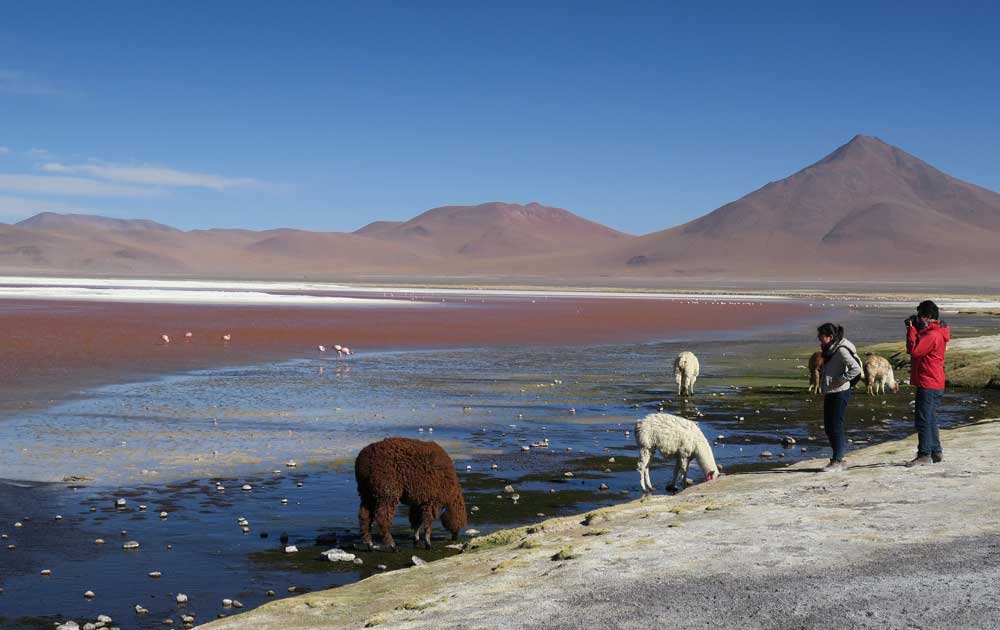
Another memory is of mountain slopes, which looked like painter’s palettes, with shades of red, orange, yellow, grey, brown and even green reflecting the mineral content of the rocks.
But it was the colour of the lagoons that we found most fascinating. Some were white, due to the presence of borax, others blue, while the green Laguna Verde changed from jade to emerald and intensified as we watched. The largest and most famous is the blood red Laguna Colorada where we saw the first of hundreds of flamingos.
READ MORE: Destination: Vietnam
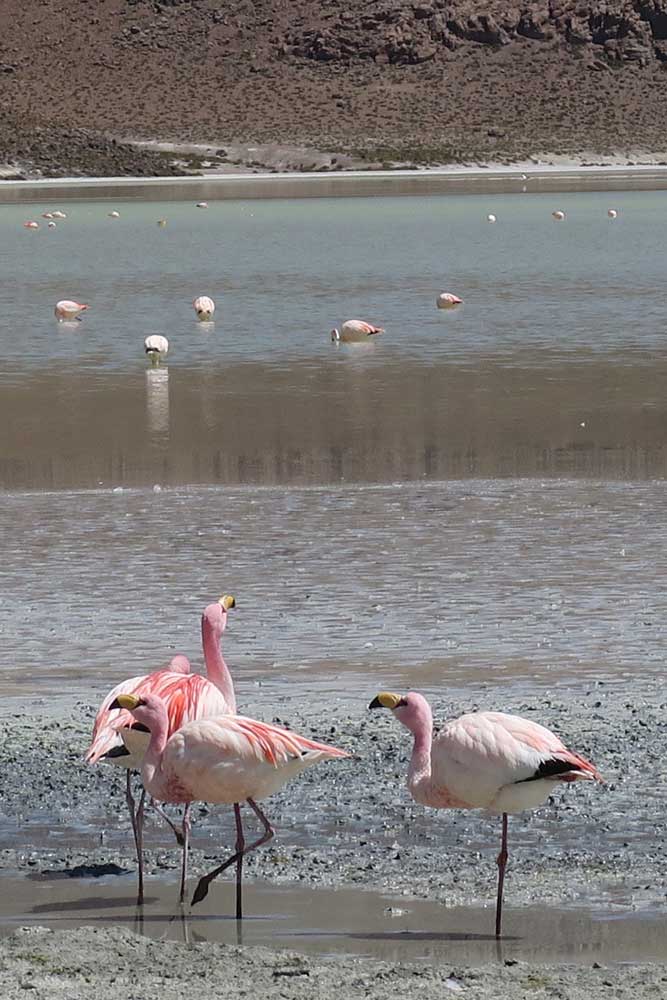
A cross-country drive took us out of the park to an old railway line, which, until the 1940s, transported silver first mined by the Spanish conquistadors. Then we were at the Salar de Uyuni, the largest salt flat in the world. It resembles a mirror reflecting the sky in the rainy season, but when dry, the surface cracks into large hexagons. We were shown how the salt was mined and cut into blocks then we drove across the flats to the isolated Incahuasi Island, made of volcanic rock and fossilised coral, standing above the salt.
On the last leg of our journey, we flew from the town of Uyuni, with its famous train cemetery, over the Andes to La Paz, the highest city in the world. La Paz lies in a deep, bowl-shaped valley. We looked down from the edge in awe at the masses of tightly packed houses, many new, clinging to the steep sides and the gondolas of the Teleférico aerial cable car system which crosses the city.
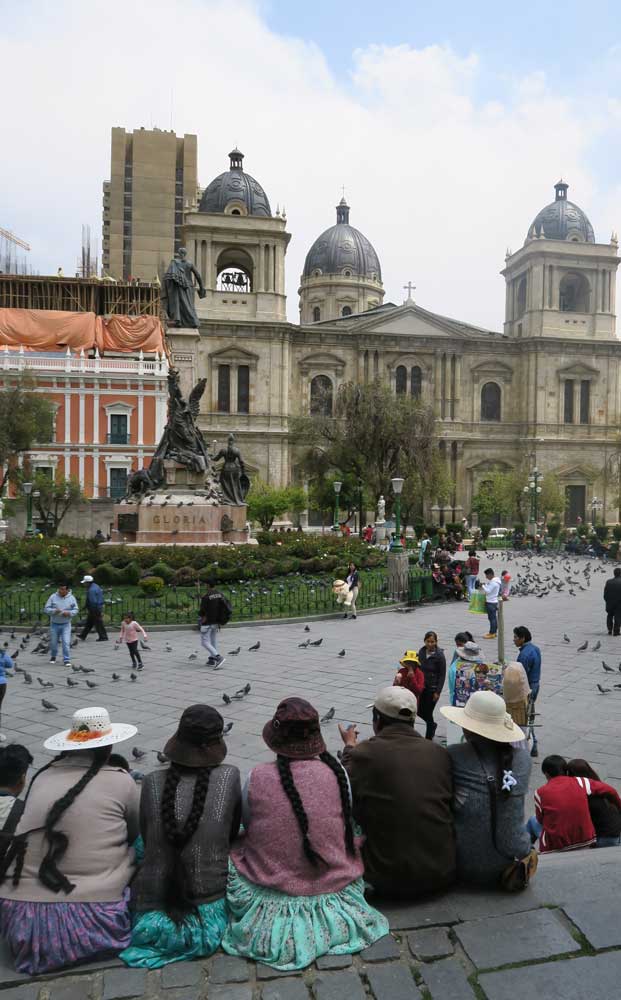
The local guide pointed out various architectural styles including the intricately carved façade of the Iglesia de San Francisco, the clock in Plaza Murillo, the numbers and hands of which go anticlockwise. Colourful buses from the 1950s chug up the steep streets, which are lined with vendors selling everything under the sun. Another attraction are the chaotic and colourful markets, the best known, the Mercado de Hechicería (Witches’ Market), where you can buy herbal and folk remedies including spells, potions, charms and herbs.
It was fascinating to see how many women (called cholitas paceñas) still wear the traditional dress of bowler hats, ankle-length skirts and shawls. This is not for the benefit of tourists, as tourism is relatively new in Bolivia, but because it’s an essential part of their lives. As we were never pestered to buy things or go to particular places, we knew we were experiencing a real glimpse of this remote and intriguing country.
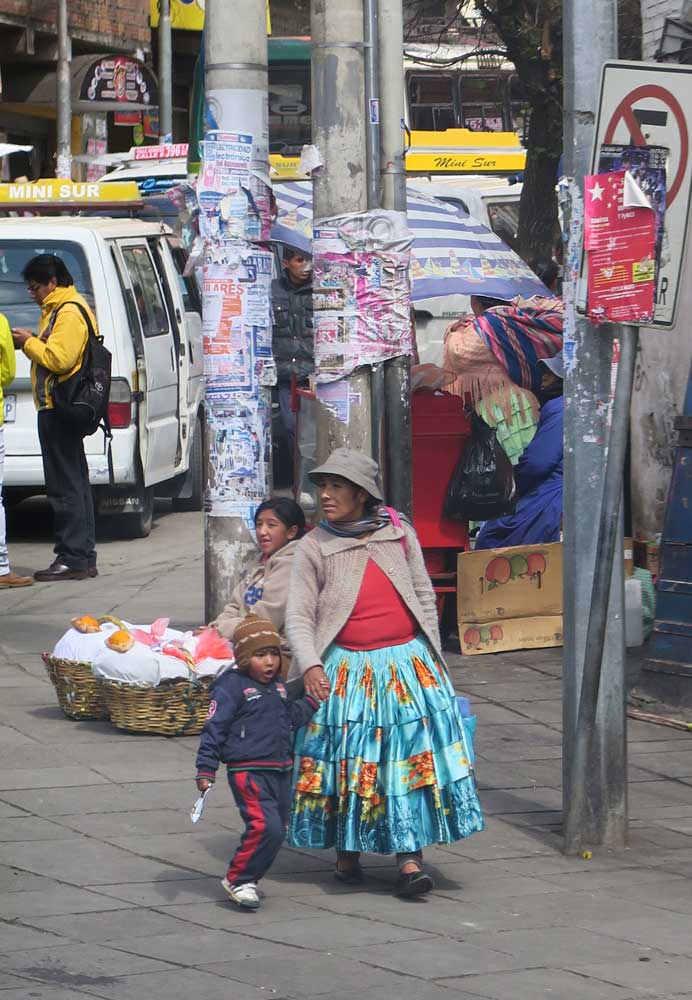
MARIANNE’S TRAVEL TIPS
MUST-SEE SIGHT
The old silver mining town of Potosi, a World Heritage Site, and its museum in the old mint and a silver mine.
ESSENTIAL ITEM TO PACK
Altitude sickness can affect anyone at altitudes over 2 500m and be life threatening. Ask your doctor for advice. Medication is available at chemists in large centres, but not in isolated areas.
GOOD TO KNOW
Ask permission before taking pictures of people. Some are very reticent, so ask politely first: “Puedo sacar una fotito?”
PLANNING YOUR TRIP
WHEN TO GO
This depends on the area you’re visiting. We went in late September, the end of their winter. Check out bolivianlife.com for the best times – Spring (September to November) and Autumn (March to May).
GETTING THERE AND WHERE TO STAY
We flew SAA from Jo’burg to São Paulo then Latam Airlines to Santiago. Local airlines were used for internal flights.
Accommodation in the country is very basic. We travelled with Tucan Tours tucantravel.com
VISAS AND DOCUMENTS
South Africans need a visa to visit Bolivia.
Visit visapak.net/contact. Yellow fever certificates are necesary.

